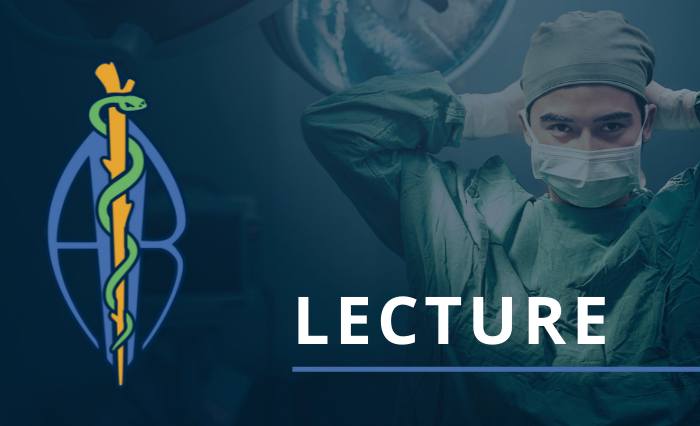From this speaker
Tips and Tricks on Surgeon and Animal Preparation-Aseptic Technique
Date: Thursday, October 12, 2023
Time: 10:00 am
Darcy Gagne, BD Most of us know the reasons for and how to prepare our surgeon and our patients for aseptic surgery without “issues”. Occasionally the various steps can become so routine that we may become lackadaisical with some of the techniques; subsequently, problems may arise without notice. Surgeon and animal preparation should be undertaken with the utmost care and attention to detail; refreshing these concepts is important. Materials & Methods: Too often we get in the groove of how we do things without considering the importance of surgeon and patient pre-op preparation, as well as intra- and post-operative care. [...]
Time: 10:00 am
Darcy Gagne, BD Most of us know the reasons for and how to prepare our surgeon and our patients for aseptic surgery without “issues”. Occasionally the various steps can become so routine that we may become lackadaisical with some of the techniques; subsequently, problems may arise without notice. Surgeon and animal preparation should be undertaken with the utmost care and attention to detail; refreshing these concepts is important. Materials & Methods: Too often we get in the groove of how we do things without considering the importance of surgeon and patient pre-op preparation, as well as intra- and post-operative care. [...]
Oh Sheep! Clinically Relevant Sheep Neurological Surgical Models for Safety and Efficacy
Date: Thursday, September 18, 2025
Time: 11:00 am
Presenter: Darcy Gagne, Becton Dickinson – Interventional Surgery Introduction: After receiving a request to demonstrate safety and efficacy for a device to come into contact with neurologic tissues, much thought in the design is necessary for maximum clinical relevance. The model includes a partial dorsal laminectomy with durotomy and another of craniectomy with durectomy and intraparenchymal injury before treatment with a device. This enables the ability to demonstrate safety and efficacy both acutely and chronically in two spaces. Materials & Methods: With request from Regulatory bodies to demonstrate acute and chronic safety and efficacy, it was determined the most clinically relevant [...]
Time: 11:00 am
Presenter: Darcy Gagne, Becton Dickinson – Interventional Surgery Introduction: After receiving a request to demonstrate safety and efficacy for a device to come into contact with neurologic tissues, much thought in the design is necessary for maximum clinical relevance. The model includes a partial dorsal laminectomy with durotomy and another of craniectomy with durectomy and intraparenchymal injury before treatment with a device. This enables the ability to demonstrate safety and efficacy both acutely and chronically in two spaces. Materials & Methods: With request from Regulatory bodies to demonstrate acute and chronic safety and efficacy, it was determined the most clinically relevant [...]
Comparative Macroscopic and Microscopic Anatomical Description of Porcine Breast Anatomy Relative To Human Breast Anatomy
Date: Thursday, September 18, 2025
Time: 2:30 pm
Presenters: Darcy Gagne, Becton Dickinson Introduction Porcine mammary anatomy is poorly understood and difficult to differentiate macroscopically. The objective of this study was to characterize the macro- and microanatomy of porcine breast tissue and draw comparisons with human breast tissue anatomy. Methods Macroscopic and microscopic anatomy of porcine mammary tissue was compared utilizing samples from an adult, non-parous female Yucatan swine prepared utilizing various methods: freezing at -80°F/ cut with a bandsaw to a thickness of 0.5 cm/ post-fixation in formalin; freezing at -20°F/ cut with a bandsaw to a thickness of 0.5 cm/ post-fixation in formalin; or formalin fixed and [...]
Time: 2:30 pm
Presenters: Darcy Gagne, Becton Dickinson Introduction Porcine mammary anatomy is poorly understood and difficult to differentiate macroscopically. The objective of this study was to characterize the macro- and microanatomy of porcine breast tissue and draw comparisons with human breast tissue anatomy. Methods Macroscopic and microscopic anatomy of porcine mammary tissue was compared utilizing samples from an adult, non-parous female Yucatan swine prepared utilizing various methods: freezing at -80°F/ cut with a bandsaw to a thickness of 0.5 cm/ post-fixation in formalin; freezing at -20°F/ cut with a bandsaw to a thickness of 0.5 cm/ post-fixation in formalin; or formalin fixed and [...]



